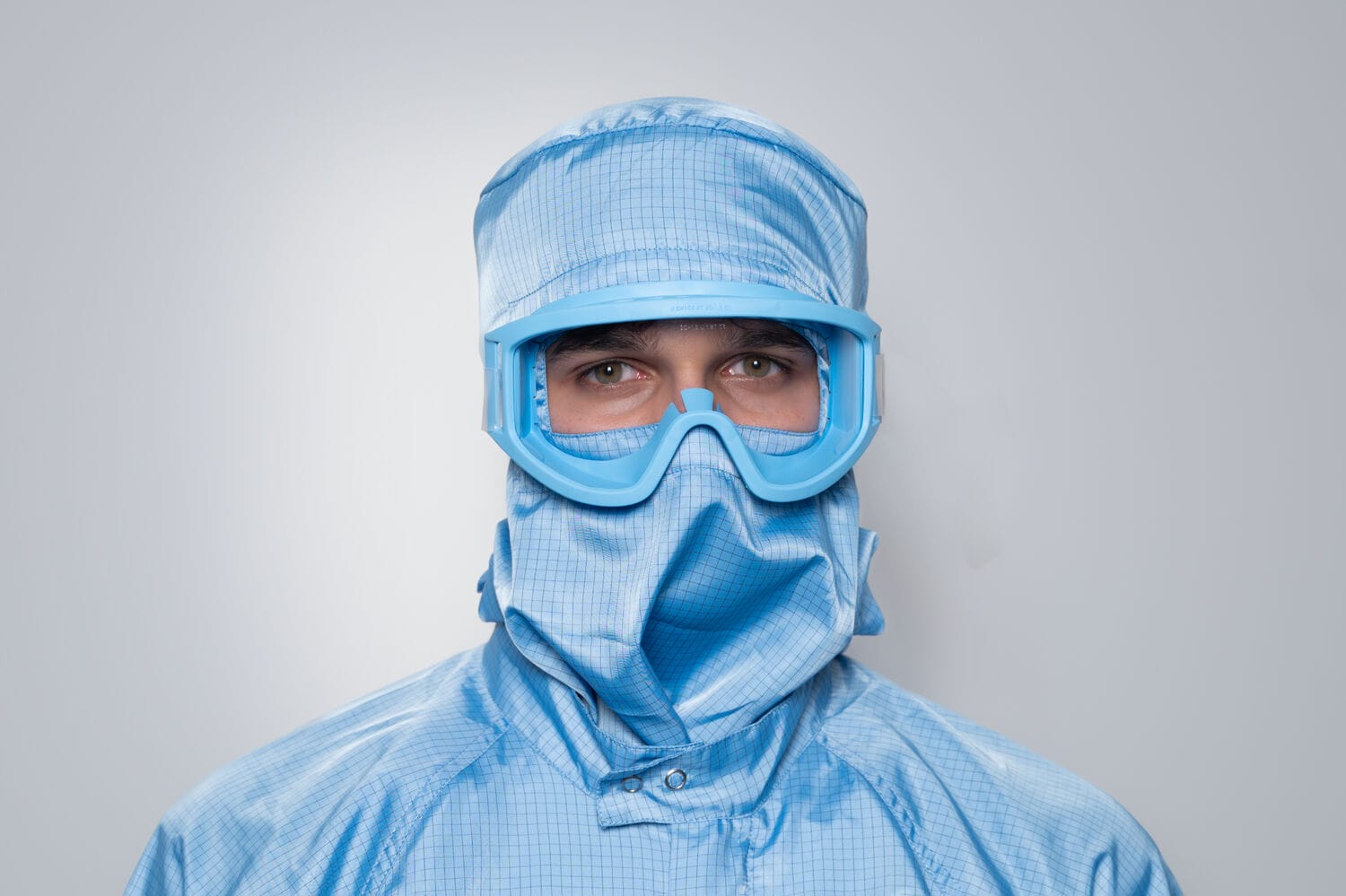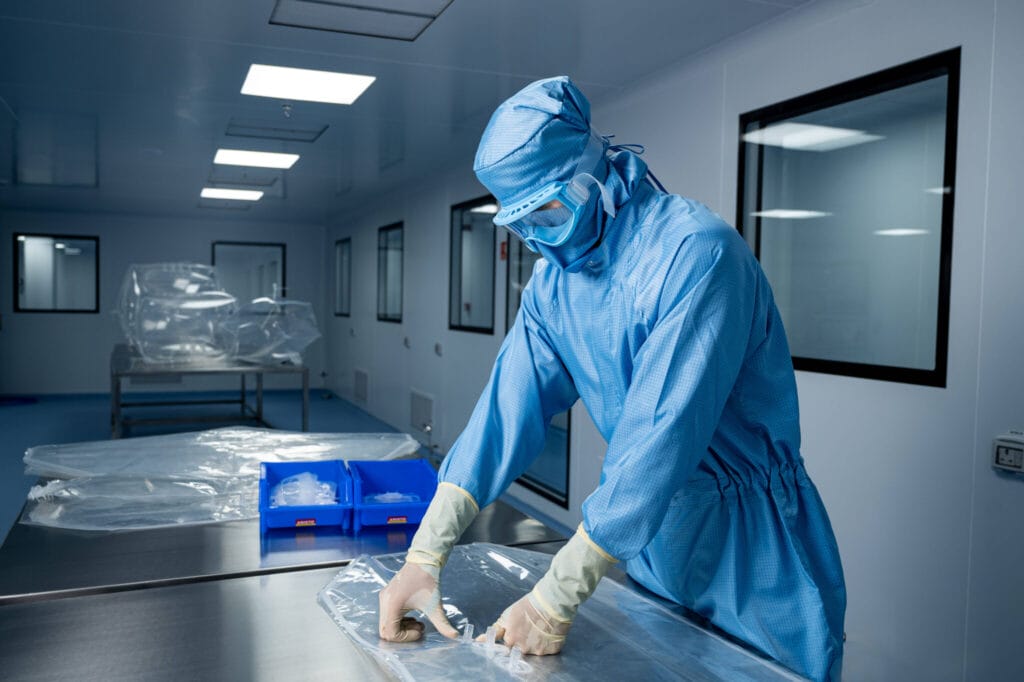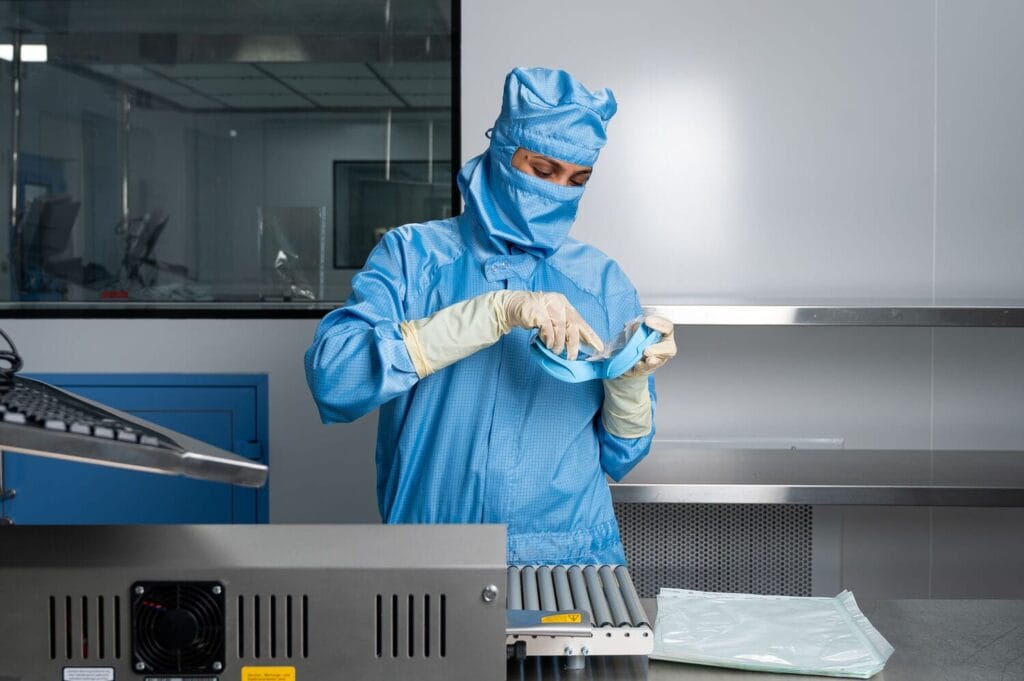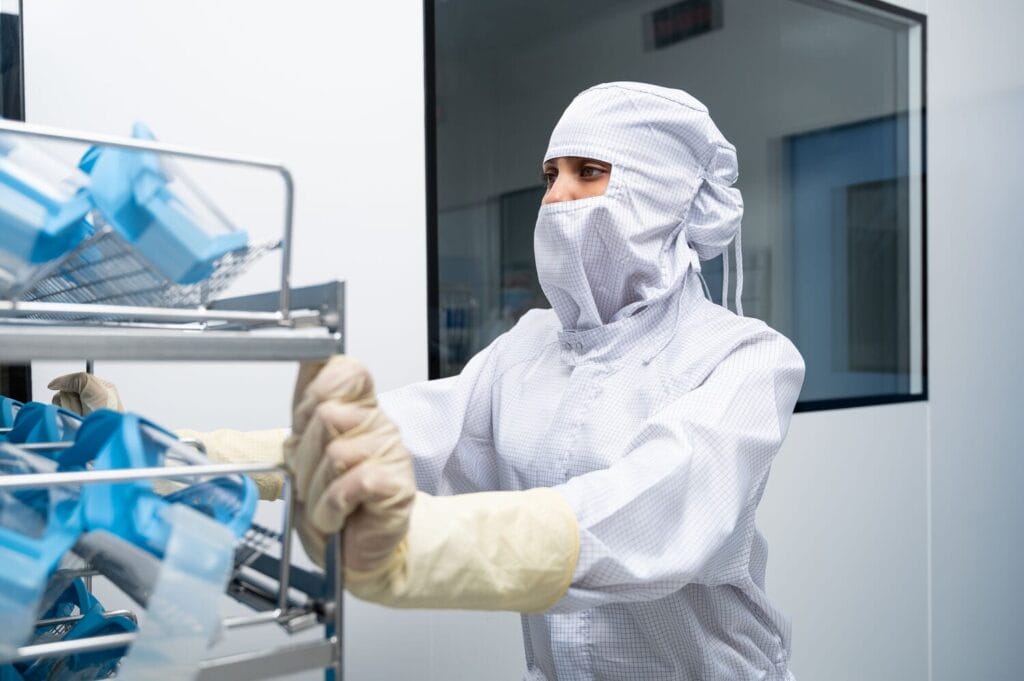
Why do ISO Class 7 cleanrooms require sterilised clothing?
In ISO Class 7 cleanrooms, even a single microscopic particle can compromise product safety, leading to potential product recalls and millions in financial losses.
These meticulously controlled environments comply with ISO 14644-1 standards, which allow no more than 352,000 particles per cubic metre of air for particles 0.5 microns or larger. Such precision is critical for industries like pharmaceuticals, biotechnology, and semiconductor manufacturing, where contamination can put a risk on product integrity and safety.
Sterilised garments are essential in maintaining the strict conditions of these cleanrooms, serving as a frontline defence against contamination. By creating a barrier between personnel and the cleanroom environment, sterilised clothing helps prevent the introduction of particles and microbes, ensuring compliance with both ISO and EU GMP Grade C standards, which focus on controlling particulate and microbial contamination.
Key features of ISO Class 7 cleanrooms
Maintaining an ISO Class 7 cleanroom involves meticulous regulation of environmental parameters, including:
- Air quality: High-Efficiency Particulate Air (HEPA) filters capture at least 99.97% of particles as small as 0.3 microns.
- Controlled airflow: Laminar or unidirectional airflow patterns minimise particle settling.
- Environmental monitoring: Continuous checks on temperature, humidity, and differential pressure ensure optimal conditions for sensitive processes.
Despite these advanced systems, personnel remain the primary source of contamination, responsible for 80–90% of microbial flora identified in cleanrooms. Movement and human activities release particles and microorganisms, which can compromise cleanroom conditions. Sterilised garments mitigate this risk by serving as an effective contamination barrier.
While pharmaceuticals dominate the conversation, ISO Class 7 cleanrooms are equally vital in other high-stakes industries such as biotechnology, where they facilitate vaccine production and biopharmaceutical manufacturing. They are also integral to fabricating microchips and precision electronic components in the semiconductor industry.
Technical specifications of sterilised garments
Sterilised garments used in ISO Class 7 cleanrooms are meticulously designed to meet strict contamination control requirements. These garments:
- Provide effective particle filtration efficiency, preventing contamination from personnel.
- Feature microbial barrier properties, ensuring sterility in critical environments.
- Include sealed seams, elasticated cuffs, and integrated closures to minimise exposure risks.
- Use synthetic fibres infused with anti-static properties to reduce particle attraction.
- Are made from non-linting materials, preventing fibre shedding and protecting cleanroom integrity.
These attributes make sterilised garments indispensable for maintaining compliance and operational reliability.
Common challenges in maintaining ISO Class 7 cleanroom standards
Maintaining cleanroom standards extends beyond installing advanced equipment. Ensuring personnel follow gowning protocols and managing the costs of sterilised garment maintenance are significant challenges. Comprehensive training programs and outsourcing garment services can be effective solutions. Training ensures that all personnel follow proper gowning procedure while outsourcing garment maintenance to a trusted partner like Lindström alleviates the logistical burden. With services such as garment cleaning, inspection, and tracking systems, outsourcing ensures compliance while allowing companies to focus on core operations.
Solutions to overcome common challenges
- Comprehensive staff training programs:
Consistent and practical training ensures that all personnel understand the importance of gowning protocols and how to follow them correctly. Training programs should be interactive and include demonstrations of proper gowning techniques, as well as periodic refresher courses to reinforce best practices. - Outsourcing cleanroom garment services:
Partnering with a reliable textile service provider, such as Lindström, can alleviate the logistical burden of cleanroom garment management. An experienced partner can handle the washing, sterilisation, and quality control processes, ensuring that garments meet ISO Class 7 standards every time they are used. Outsourcing also reduces the risk of human error and ensures that garments are always available in pristine condition. - Streamlined compliance monitoring:
Digital solutions, such as garment tracking systems, can help ensure that every garment piece is cleaned regularly and that lifetime maintenance is controlled. A reliable partner, such as Lindström, can offer such systems as part of their service, further simplifying compliance for cleanroom operators.
By adopting these solutions, industries can maintain cleanroom compliance without compromising operational efficiency. Outsourcing cleanroom garment services, in particular, allows companies to focus on their core business while ensuring that their cleanroom standards remain uncompromised.
Choosing the right sterilised garments for your cleanroom
Selecting appropriate sterilised garments is crucial for maintaining ISO Class 7 standards. Consulting with experts can provide valuable insights into selecting the best textile solutions, ultimately enhancing operational efficiency and product quality. By understanding the role of sterilised garments and overcoming challenges, industries can maintain high standards, ensuring safety and quality in their operations.
Investing in the right clothing solutions is a step toward achieving excellence in cleanroom management. Partnering with reliable service providers, industries can confidently uphold cleanroom standards, ensuring operational excellence and product safety.




